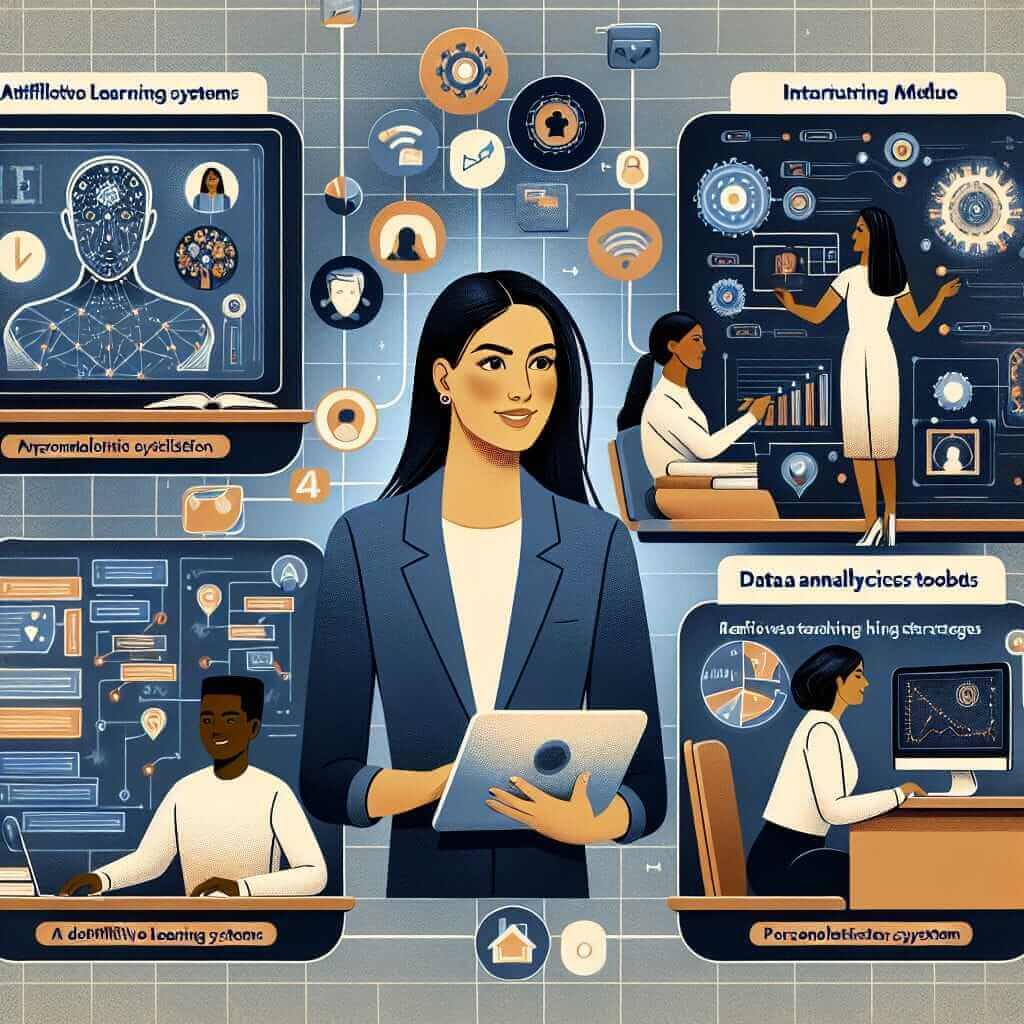The Reading section of the IELTS exam is a crucial component, designed to test a candidate’s ability to understand and interpret a variety of texts. Over the years, the subject matter of these texts has evolved, often reflecting current trends and innovations. An increasingly popular topic in recent IELTS Reading tests is “How AI is being used in personalized education.” This theme reflects the technological advancements and their implications on education, making it a relevant and timely topic for test preparation.
Nội dung bài viết
- Reading Practice Test on “How AI is Being Used in Personalized Education”
- Reading Passage (Medium Difficulty)
- Questions
- Multiple Choice
- True/False/Not Given
- Matching Information
- Answers
- Multiple Choice
- True/False/Not Given
- Matching Information
- Lessons Learned
- Vocabulary
- Grammar Insight
- Advice for Achieving High Reading Scores
Analyzing past IELTS exams and current educational trends, we believe topics related to AI and personalized education are likely to appear again. This article will provide a comprehensive reading practice test focused on this subject, along with questions, answers, vocabulary, and grammar insights.
Reading Practice Test on “How AI is Being Used in Personalized Education”
Reading Passage (Medium Difficulty)
Artificial Intelligence (AI) is revolutionizing various sectors, and education is no exception. In the realm of personalized education, AI plays a pivotal role in tailoring learning experiences to individual students’ needs, preferences, and learning styles.
One significant application of AI in personalized education is adaptive learning technology. These systems utilize algorithms to analyze a student’s strengths and weaknesses through their learning patterns. For instance, if a student struggles with certain math concepts, the system can provide additional resources and exercises to address these gaps. Conversely, if a student excels, the system can introduce more challenging material to keep them engaged.
Another way AI is enhancing personalized education is through intelligent tutoring systems (ITS). These systems simulate one-on-one tutoring by responding to a student’s actions in real-time. For example, an ITS for language learning might offer instantaneous feedback on pronunciation and grammar, helping students improve their skills more efficiently than traditional classroom settings.
Moreover, AI can be used to create personalized learning paths. By considering various factors such as students’ interests, career goals, and academic performance, AI systems can recommend specific courses or study materials. This approach not only makes learning more relevant but also increases student motivation and success rates.
Additionally, AI-driven analytics provide educators with valuable insights into student performance and engagement. With this data, teachers can identify at-risk students early and provide timely interventions, ultimately improving educational outcomes. These analytics also assist in customizing lesson plans to better suit the collective needs of the class.
However, the implementation of AI in personalized education is not without challenges. Privacy concerns, data security, and the digital divide are significant issues that need addressing. As AI collects and processes vast amounts of data, protecting student information is paramount. Moreover, equal access to AI technologies must be ensured to prevent widening the educational gap between different socio-economic groups.
In summary, AI is a transformative force in personalized education, offering adaptive learning, intelligent tutoring, personalized learning paths, and data-driven insights. While challenges remain, the potential benefits of AI in creating more effective and individualized learning experiences are substantial.
 how AI is used in education
how AI is used in education
Questions
Multiple Choice
-
What is the primary role of AI in personalized education?
- A) Reducing the cost of education
- B) Tailoring learning experiences to individual students
- C) Automating administrative tasks
- D) Replacing human teachers
-
How do adaptive learning systems work according to the passage?
- A) By providing a standardized curriculum for all students
- B) By analyzing students’ learning patterns to offer customized resources
- C) By allowing teachers to manually select resources
- D) By focusing only on students’ strengths
True/False/Not Given
- Intelligent tutoring systems can offer instantaneous feedback on pronunciation and grammar. (True/False/Not Given)
- The passage claims that AI systems can reduce the digital divide. (True/False/Not Given)
Matching Information
Match the following AI applications with their descriptions:
5. Adaptive learning technology
6. Intelligent tutoring systems
7. AI-driven analytics
- A) Provide real-time responses to students’ actions
- B) Use algorithms to tailor educational content to individual needs
- C) Offer teachers insights into student performance and engagement
Answers
Multiple Choice
- B) Tailoring learning experiences to individual students
- B) By analyzing students’ learning patterns to offer customized resources
True/False/Not Given
- True
- Not Given
Matching Information
- B) Use algorithms to tailor educational content to individual needs
- A) Provide real-time responses to students’ actions
- C) Offer teachers insights into student performance and engagement
Lessons Learned
Common mistakes in this type of reading passage often include:
- Misinterpreting the role of AI applications due to unfamiliarity with technical terms.
- Incorrectly answering True/False/Not Given questions due to misunderstanding or overgeneralizing information.
Vocabulary
- Adaptive (adj): /əˈdæptɪv/ – Able to change as needed.
- Algorithm (n): /ˈælɡərɪðəm/ – A process or set of rules followed in calculations or problem-solving.
- Simulate (v): /ˈsɪmjuleɪt/ – To imitate or replicate conditions or situations.
- Pronunciation (n): /prəˌnʌnsiˈeɪʃ(ə)n/ – The way in which a word is spoken.
Grammar Insight
- Passive Voice in Technology Descriptions: AI systems are used to analyze data.
- Present Perfect Continuous: AI has been revolutionizing education.
Advice for Achieving High Reading Scores
- Practice Regularly: Exposure to varied topics, especially current trends, improves comprehension skills.
- Develop Vocabulary: Familiarize yourself with technical terms and their applications.
- Understand Question Types: Thorough practice of different question formats enhances accuracy and speed.
- Stay Updated: Reading current articles related to AI in education can give you context and improve understanding.
By following these guidelines and regularly engaging with practice materials, achieving a high score in the Reading section of the IELTS exam is entirely within your reach. Happy studying!


